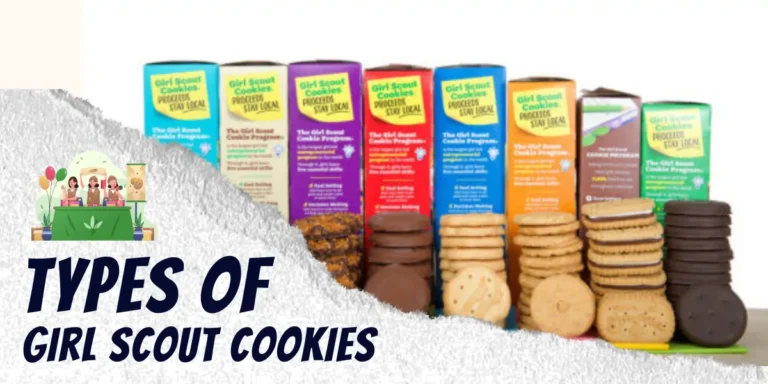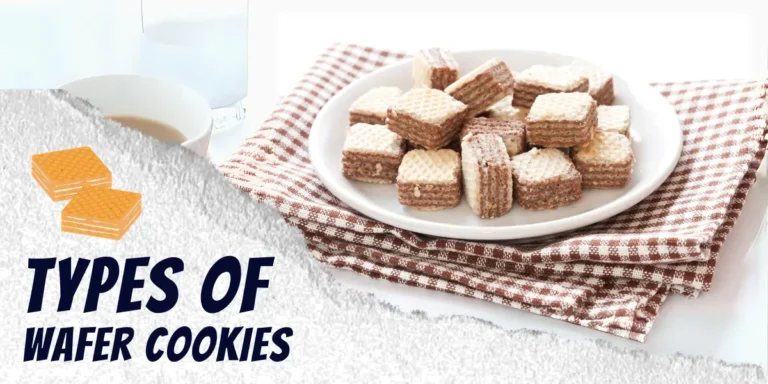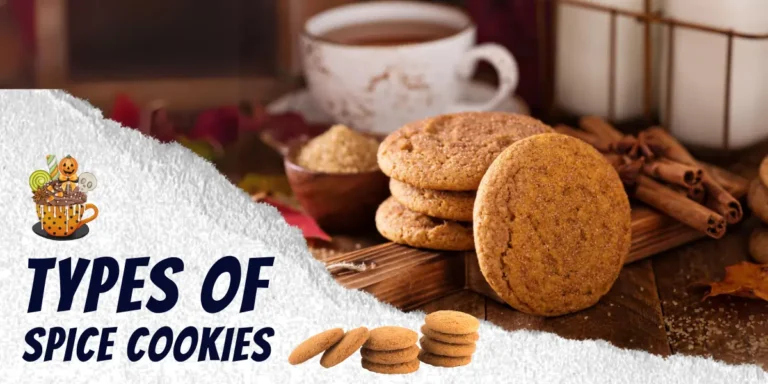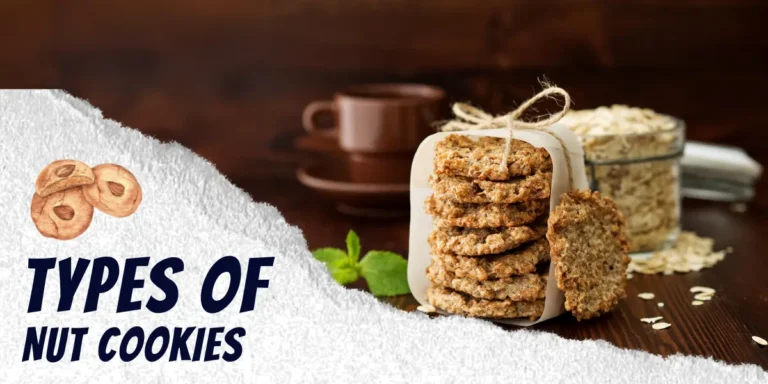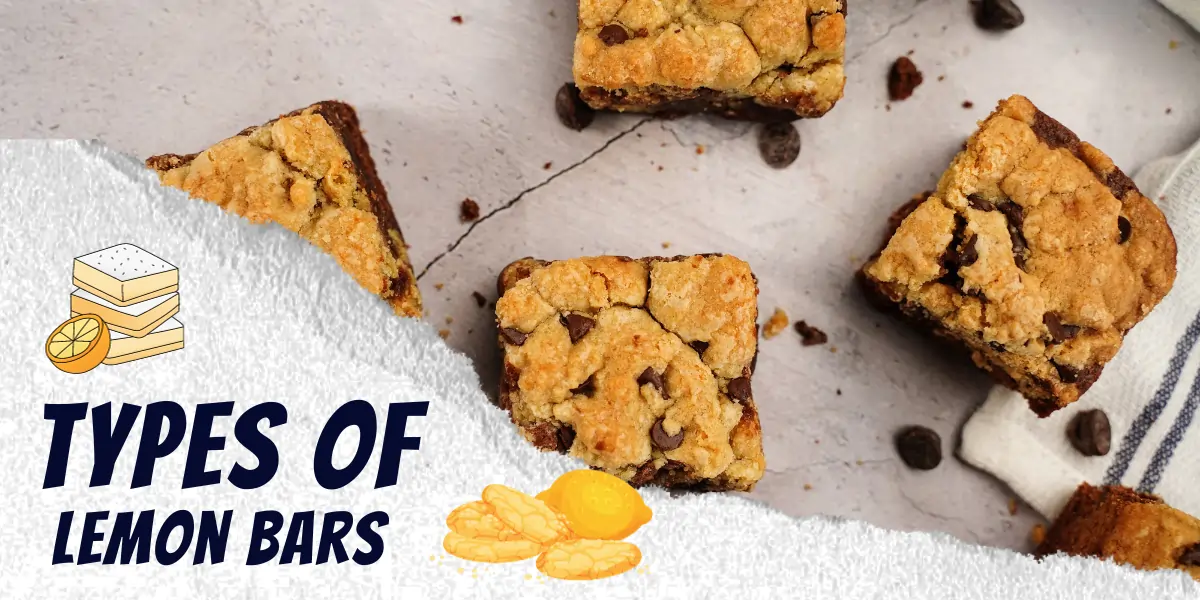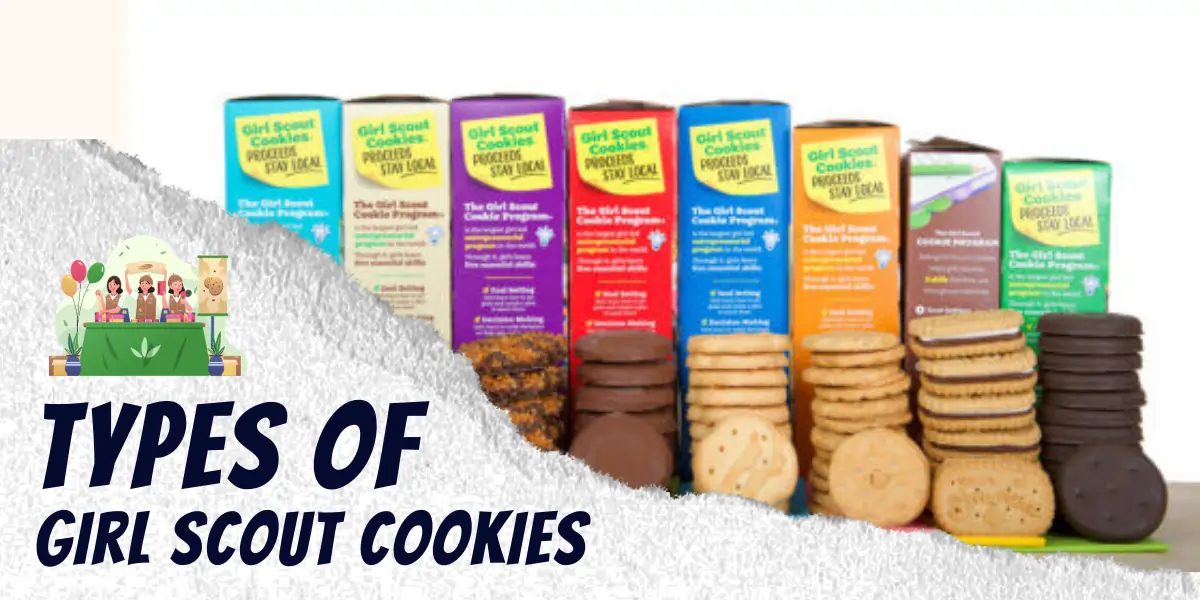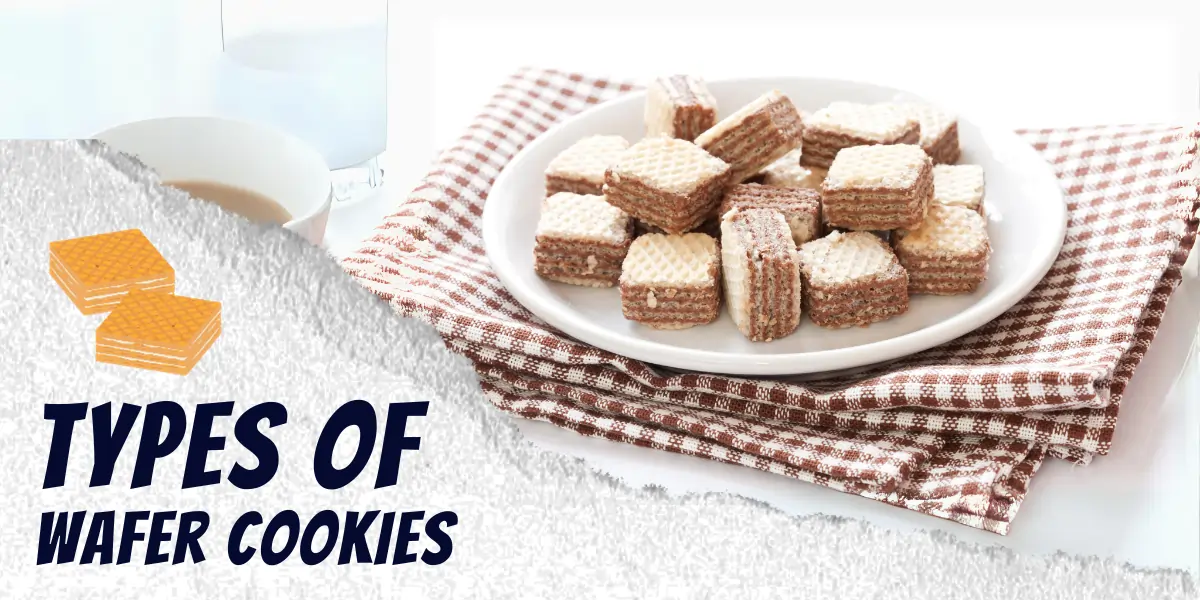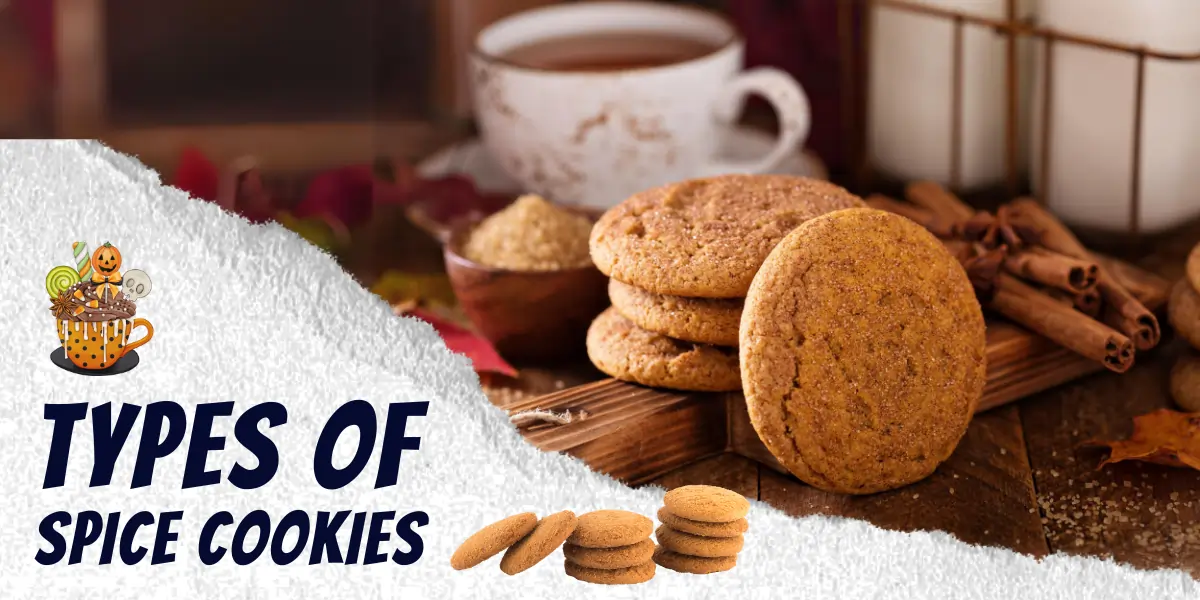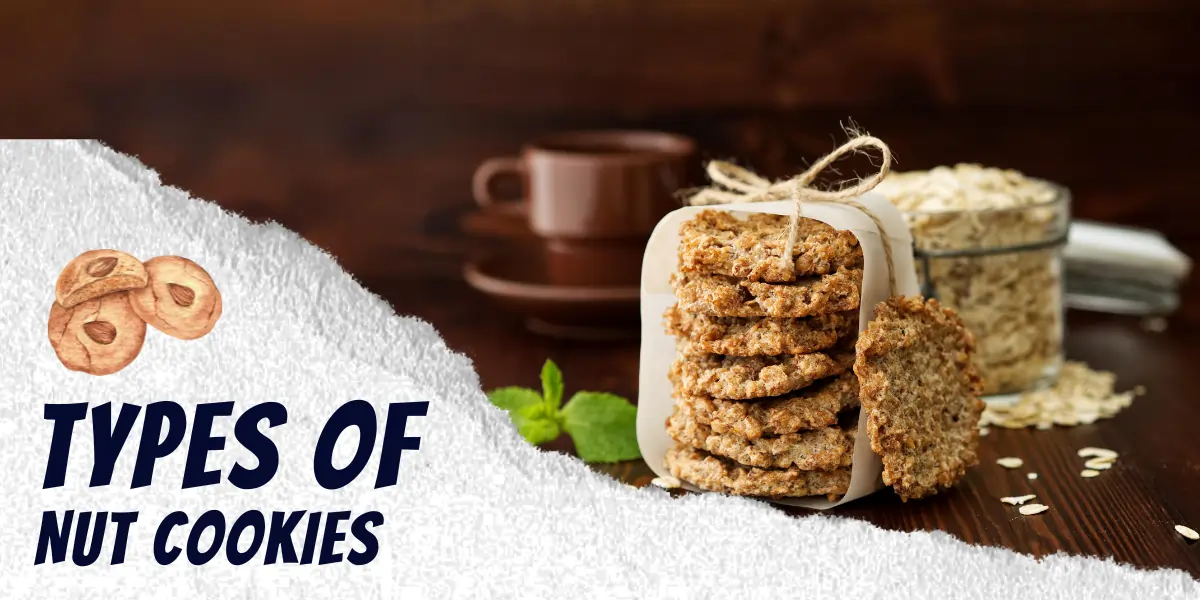From petite finger foods to towering 9×13 dessert spreads, lemon bars capture bright citrus charm in each tangy-sweet bite. This guide will pucker you up with everything to know about types of lemon bars – from classic versions to global spins, tiny toppings to towering layers, and the whole lemon-lovers lore between. Park your peckers and get ready to dive mouth first into the whole spectrum of lemon bars!
Table of Contents
An Intro to Lemon Bars
Before biting in, let’s quickly define what exactly lemon bars are at their core.
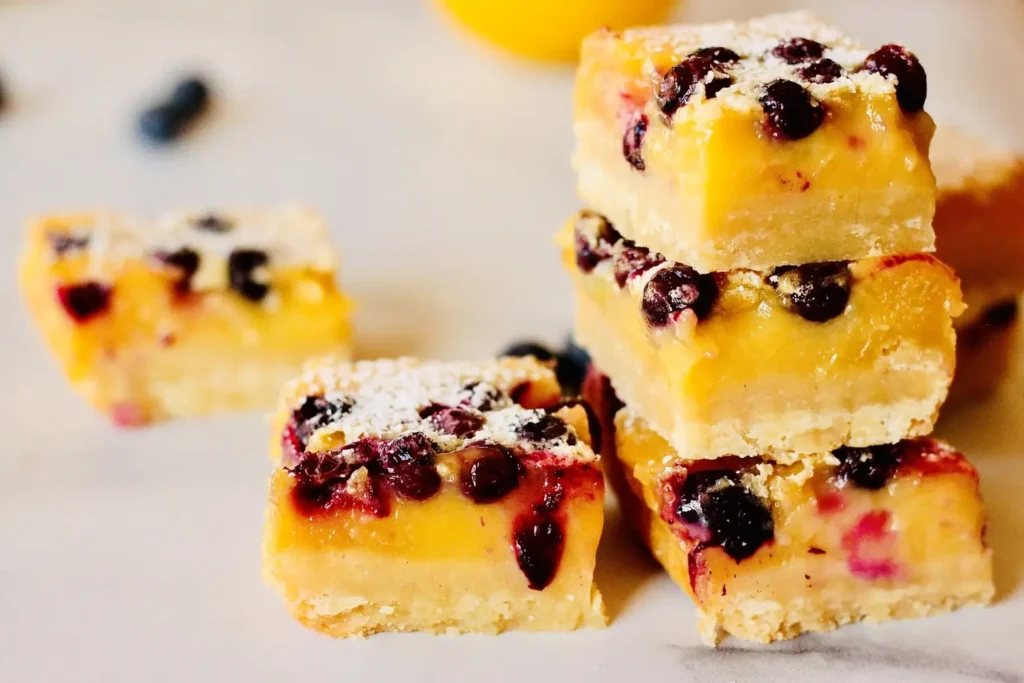
Lemon bars refer to any dessert consisting of a thin, dense lemon-infused curd filling layered over a thick shortbread crust base then topped with powdered sugar. Think of them like portable, portion able lemon pies sans the meringue.
The tangy-sweet bars achieve balance through contrasting textures of melting velvety curd, tender yet crumbly crust, and light dusting of powdered sugar up top. Sizes range from petite bites to large slab pans – making them endlessly adaptable. Now, let’s start separating and featuring different types!
Key Ingredients Across All Types
Though manifestations vary greatly, core components shine through in all lemon bars. Here’s the science behind transforming simple ingredients into complex, crave worthy flavor and textures:
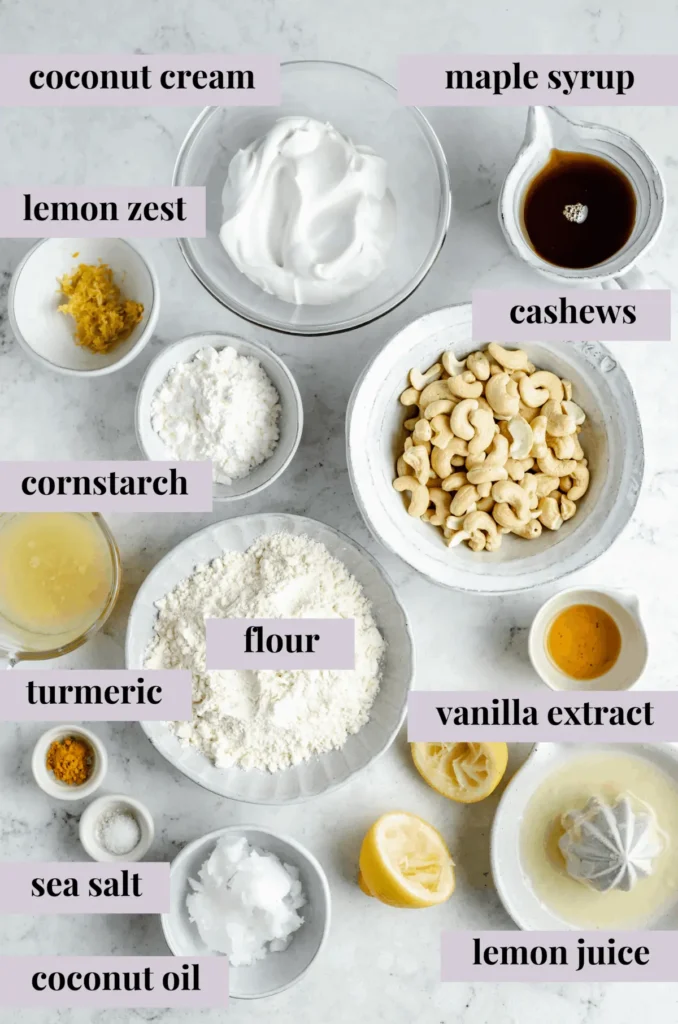
Crust Foundation:
- Butter provides rich flavor + tender, crumbly texture
- Flour lends binding structure to balance fats
- Sugar enhances overall sweetness side-by side filling
Zesty Filling:
- Lemon juice as key acid source
- Eggs and butter thicken and set curd
- Sweeteners balance sour brightness
Finishing Flourish:
Powdered sugar adds delicately sweet touch without overpowering citrus
Now that we’ve laid the empirical groundwork, let’s dig into the details distinguishing types of lemon bars from each other!
Classic Flavors Lemon Bars
These traditional flavor renditions hearken back to retro community cookbooks – comforting, nostalgic essence with simple flavor clarity. Revisit lemon bars in their original unadulterated glory.

Traditional:- The OG bars anchoring middle school bake sales across America.
Characteristics:
- Tart lemon juice and zest filling
- Neutral shortbread crust base
- Sprinkling of powdered sugar atop
- No additional flavors
Pros:
- Purist true lemon flavor
- Universally enjoyed
- Allows accompaniments to shine
Cons:
- One-note flavor lacks complexity
- Too tangy for some preferences
Use Cases:
When life gives you lemons, you pack them neatly into a nostalgic bar cookie bringing smiles across generations. Their simplicity complements other desserts on a platter yet holds their own for snacking solo. Bright flavor lifts winter doldrums without seasonal limits.
Global Flavor Fusions
As lemon bars spread worldwide, cultural remixes add alluring aromatic twists. Discover global interpretations on traditional lemon bars.
Meyer Lemon Bars:- Meyer lemons bring floral, herbal vibrancy.
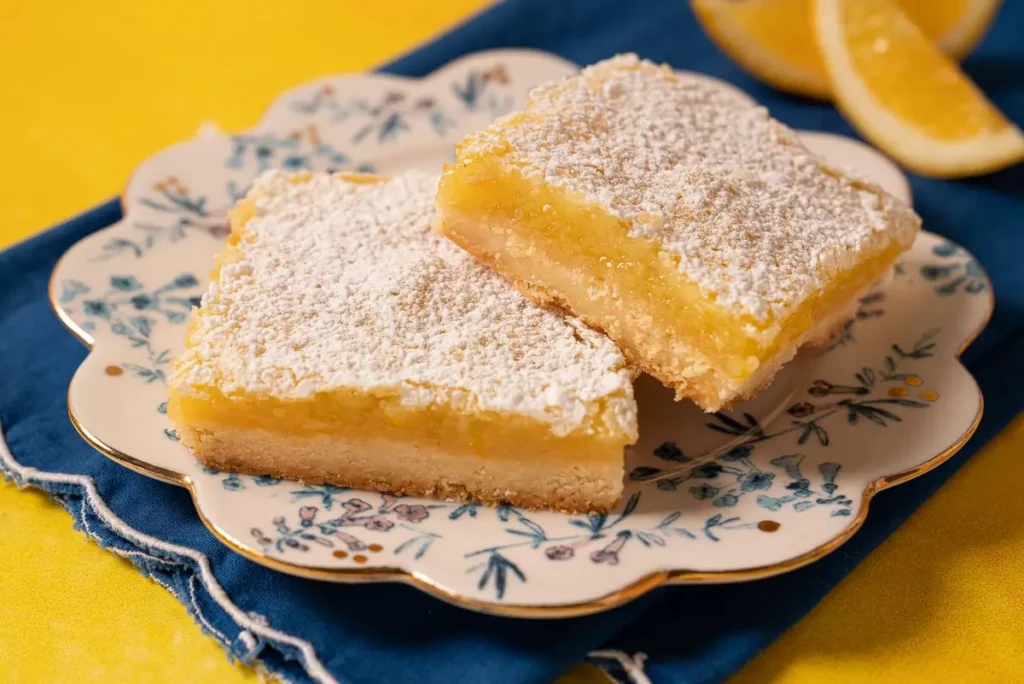
Characteristics:
- Fragrant Meyer lemon juice/zest infused curd
- More aromatic, subtly sweeter than standard lemon
- Great make-ahead flavor as key oils release over time
Pros:
- Unique flavor bridge between lemon and orange
- Softer acidity welcomed by some palates
- Elegant taste and appearance
Cons:
- More difficult to source Meyer lemons
- Subtler flavor missed by hardcore lemon devotees
- Often pricier than regular lemons
French Lemon Tart Bars:- Crisp, buttery crust with smooth lemon curd confined by pastry walls.
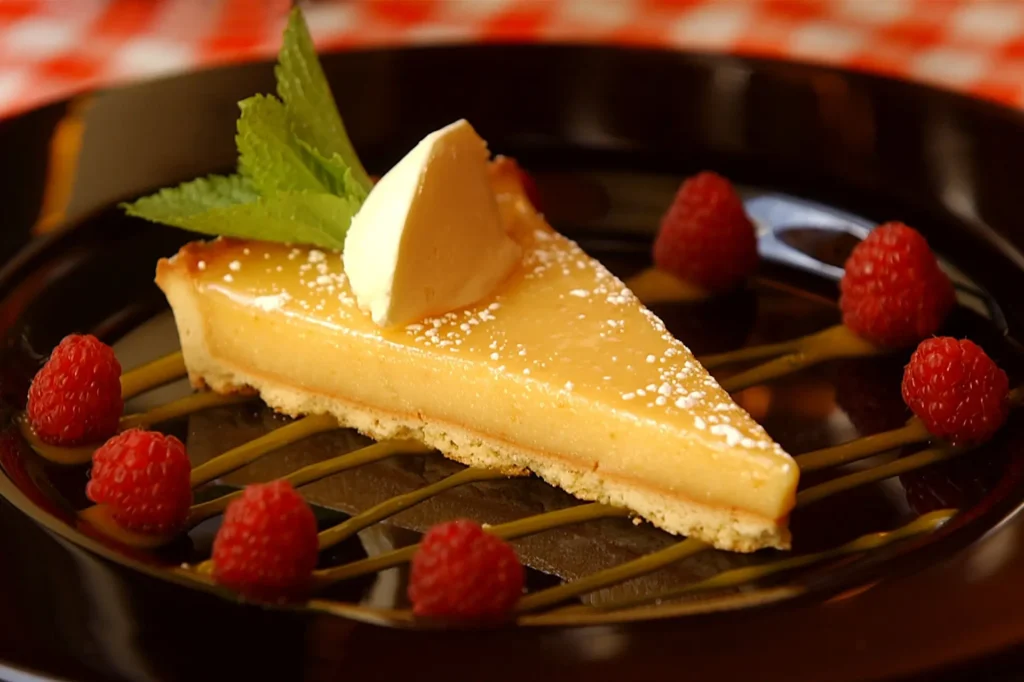
Characteristics:
- Made in tart tin with vertical sides
- Signature flavor from French lemons
- Custard-like curd texture
Pros:
- Elegant plated presentation
- Intensity of lemon encased
- Iconic French pastry heritage
Cons:
- Tedious shaping/extra dishes
- Custard texture divisive for some
- High risk of curdling if cooked too quickly
Use Cases:
Globally inspired bars add intrigue to the traditional dessert platter. Delicate floral Meyer lemon lifts moods without overpowering. French custard version brings nobility, perfect for high tea or homemade high-low fusion. When life hands you lemons, say “oui!” then bake diverse bars without borders!
Modern Trendy Versions
Beyond the classics, contemporary lemon bars capture current cooking trends – new ingredients and simplified shortcuts. Check out cutting edge bars.
Vegan Lemon Bars:- All the bright flavor without the dairy and eggs!
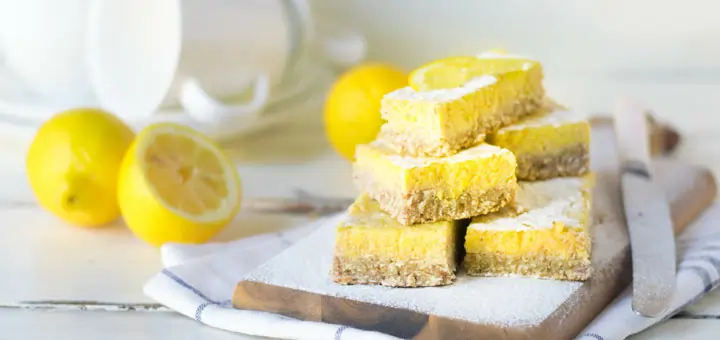
Characteristics:
- Plant-based butter and egg replacement
- Traditional flavor/texture mimicry
- Often less sweet than non-vegan
Pros:
- Inclusivity for dietary preferences
- Retains balanced tart-sweet essence
- Creative substitution chef’s challenge
Cons:
- Denser, more trilogy texture
- Moisture content impacts structural integrity
- Reduced decadence for some
Sheet Pan Lemon Bars:- Simplified method to feed a crowd!
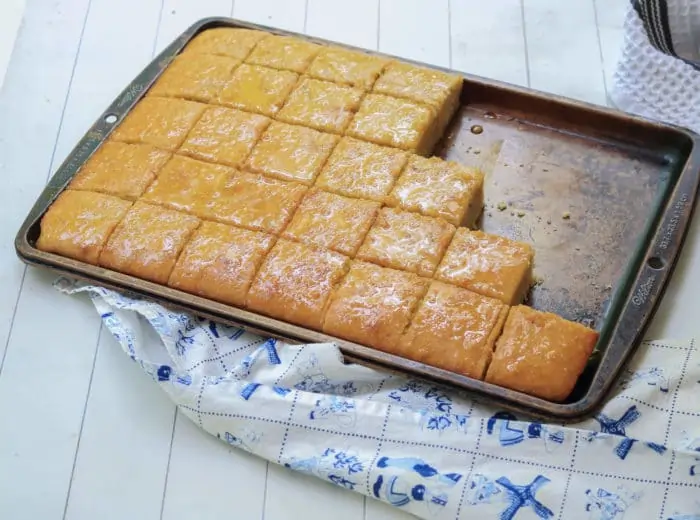
Characteristics:
- Bars baked in single sheet pan
- Saves extra crust dish to wash
- Allows custom slicing sizes
Pros:
- Streamlined baking steps
- Easy to double or halve
- Saves cleanup headaches
Cons:
- Uneven baking issues
- Overcrowded pan distorts bars
- Messy juicy cross-contamination
Use Cases:
Both modern lemon bar formats cater to current needs – dietary preferences, shortcut convenience, customization flexibility. Vegan bars include more folks without sacrificing that signature lip-puckering pleasure. Sheet pan streamlines process to minimize mess and math headaches when baking for a crowd!
Creams & Glazes
Beyond the bars themselves, tangy sweet creams provide flirty flavor dollops. Discover trendy lemon curds, glazes and creams to anoint bars with!
Lemon Curd:- Glossy, pourable custard like cream.
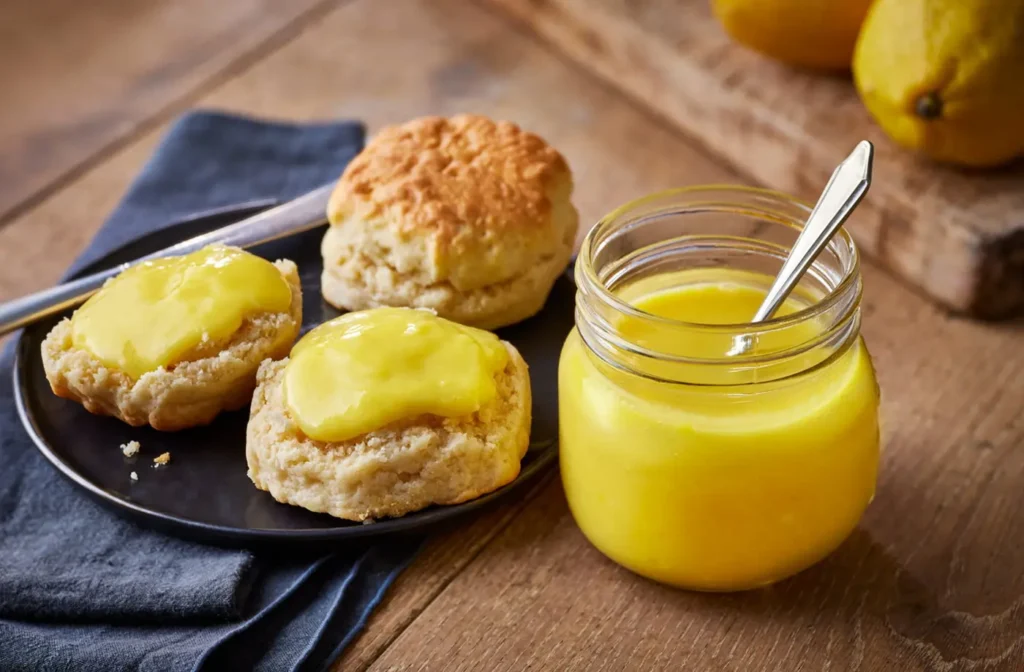
Serving Suggestions:
- Pooling filling into bars and tarts
- Fanciful drizzles over bars
- Fruit or cake layer filling
Lemon Glaze:- Thin icing for glossy coverage.
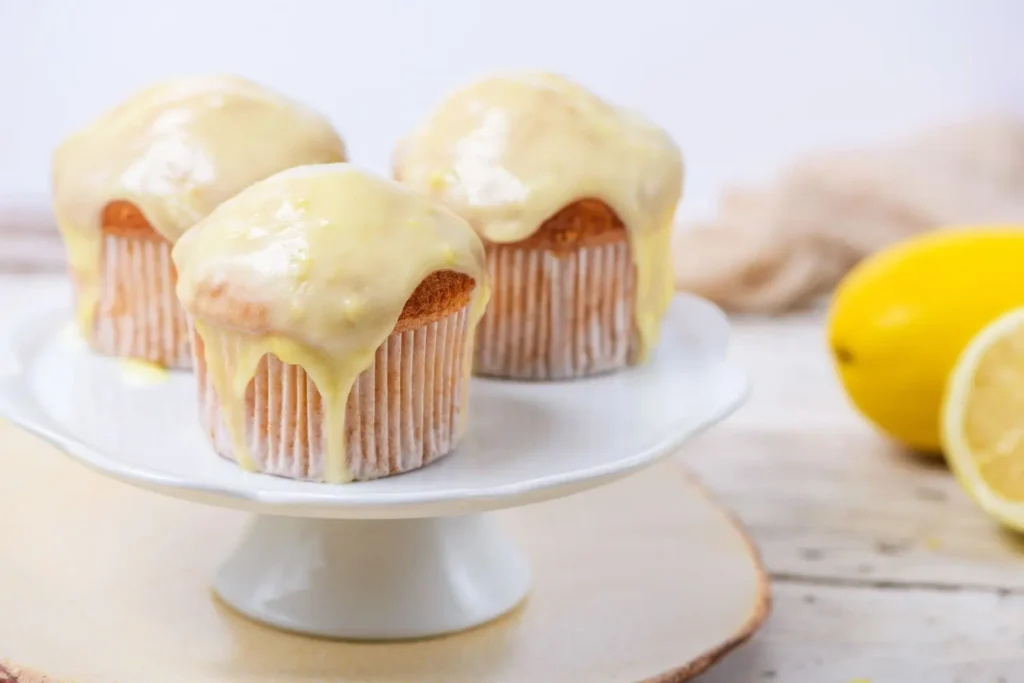
Uses:
- Drizzled artfully over bars
- Bright finishing touch for cakes
- Brushed on fruit tarts before serving
Pros:
- Elevates presentation
- Provides moisture when bars are dry and stiff
- Extra citrusy accent
Cons:
- Adds rich sweetness minimizing tartness
- Too much glaze can make desserts gloppy
- Risk of sliding off slick surfaces
Use Cases:
When life gives you lemons…make lemon aid! Fancy up plain bars through glistening pools, artful drizzles and sticky glazed coatings. Showstopper enhancements take crunchy shortbreads to next level feats of pastry architecture.
Mix-In Zingers
Beyond lemon essence, mix-in ingredients provide pucker-worthy tang, textural crunch and flavor surprise.
- Berries:- Sweet-tart pops of color and seeds.
- Best Types: Raspberries, blueberries, blackberries
- Herbs: Subtle savory accent.
- Best Choices: Lavender, rosemary, thyme
- Citrus Zest:- Boosts aromatic oils.
- Beyond Lemon: Lime, grapefruit, orange
Pros:
- Heightens sensory experience
- Health bonuses like antioxidants
- Sparks new flavor combos
Cons:
- Moisture impacts texture
- Strong oils or juices overwhelm
- Piece integrity loss after baking
Use Cases:
Mix-ins amplify and elevate lemon bars from meh to marvelous. Tart berries offer bright relief cutting richness. Fragrant herbs provide alluring mystery for sophisticated palates. And added citrus zests double-down on lip-puckering punch. Blend mix-ins to reinvent nostalgic classics!
Decorative Toppers
Visually enhance lemon bars through creative arrangements, designs and garnishing.
| Topping | Description |
|---|---|
| Streusel | • Crumbly sweet topping • Made from flour, sugar, butter • Batch topping for texture |
| Sprinkles | • Rainbow, white, coordinating colors • Liberal or delicate sprinkle |
| Powdered Sugar | • Light dusting over cooled bars • Subtle sweetness |
| Citrus Zest | • Lemon, lime, orange zest • Add color and flavor • Diagonal lines or citrus confetti |
| Crumbled Graham Crackers | • Adds crunch and sweetness • Coordinate with crust or curd color |
| Fresh Berries | • Whole or sliced raspberries, blueberries, strawberries • Neatly arranged or artfully scattered |
| Herbs | • Lemon thyme, lemon basil • Delicate small sprigs or finely chopped |
Use Cases:
Bright plates by embellishing plain bars through lively lemon wheels, vibrant berry splashes, or intricate stencil shapes. Frame your citrus canvas creation then sit back as all eyes zoom to your artfully adorned dessert!
Size Formats
Beyond flavor, lemon bars appear in wide-ranging sizes and shapes to suit any spread. Discover your best baking container fit.
Here is the lemon bar size formats summarized in a table:
| Size Format | Examples |
|---|---|
| Standard Pan Sizes | • 8×8 inch pan – 9-16 bars • 9×13 inch pan – 15-24 bars • 11×17 inch pan – 20-36 bars |
| Descriptive Sizes | • Mini – 1-2 inch squares • Small – 2 inch squares • Medium – 2.5-3 inch squares • Large – 3-4 inch squares • Extra Large – 4-5 inch squares |
| Weight/Volume | • Standard servings: 1.5-2 ounces • 9×13 pan yields 24-36 ounces • 1/4 cup, 1/2 cup per bar |
| Dimensions | • 2×2 inches • 3×2 inches |
| Count | • Half sheet pan: 16 bars • Full sheet pan: 32 bars • Total number in recipe |
Use Cases:
All lemon bar sizes suit needs from petite party bites to substantial dessert spreads. Miniature versions deliver precious hand-held cuteness. Classic rectangular slices serve nostalgic homemade hospitality. And full sheet pans pave the citrus way for feed-a-crowd convenience.
Specialty Shapes
Beyond basic rectangles, consider crafting quirky lemon bar shapes for added wow-factor.
| Shape | Description |
|---|---|
| Hearts | Standard heart-shaped pans available Romantic for special occasions |
| Flowers | Flower-shaped silicone molds Pansies, roses, daisies |
| Stars | Star-shaped pans or can cut out bars after chilling Various sizes from mini to large |
| Diamonds | Use rhombus shaped pans Also create by cutting square bars diagonally |
| Triangles | Triangle bar pans available Slice squares diagonally |
| Hexagons | Honeycomb-style hexagon molds and pans available Interesting geometric option |
| Squares | Traditional and common Easy to cut uniformly |
| Rectangles | Standard shape from rectangular pans Lengths can vary |
| Circles | Round cake pans can work for small circles Also cut circles out of chilled bars |
| Mini Bites | Use mini muffin tins Bite-size lemon bars, about 1 inch |
Use Cases:
When basic bars bore you, embrace your inner artsy rebel! Craft eye-catching shapes, patterns and cut-outs that zig while lackluster squares zag. Then watch guests zoom lenses straight to your bold lemon creations. Season’s eatings taste even sweeter when they stun visually too!
How to Store Lemon Bars
Once baked, proper storage locks in lemon bar bliss – maintaining moisture, preserving crisp textures, and avoiding quick staling. Learn ideal conditions for maximizing bar lifespan.
Best Methods:
- Room temp overnight resting uncovers fullest flavors
- Then cover tightly at least 3 days fridge; 1 month freezer
- Allow frozen bars to thaw gradually in fridge
Materials:
- Airtight food containers with secured lids
- Plastic wrap pressed directly on surface
- Foil over container dishes
Tips:
- Bars keep best uncut for structural integrity
- Cook bars just until set but still slightly jiggly
- Avoid detective freezer scents permeating
Pro Tip: Indulge cravings instantly using frozen slice-and-serve portions!
The History of Lemon Bars
While lemon bars feel nostalgic, their origins are surprisingly recent – tracing back to 20th century community cookbooks and the proliferation of oven ranges in family kitchens. Perhaps their comforting essence reflects not ancient generations but our grandmother’s childhoods instead. In any case, lemon bars continue spreading pucker-worthy cheer over a century later!
Conclusion
We’ve toured the whole spectrum – from timeless classic crust-curd-powdered sugar lemon bars to global interpretations, trendy twists, and outlandish garnished displays. No matter what form these small sours take, balance endures as the holistic goal – complementing sweet with tart, textures with temperatures, tradition with trendsetting.
As you incorporate new mouthwatering findings into your next citrus creation, remember equilibrium is the target. When flavors harmonize and contrasts captivate, you’ve achieved lemon bar nirvana! Now get baking and let us know what tangy renditions earn your pucker power endorsement!


